Laptop Mag Verdict
The Asus ZenBook 14X OLED Space Edition is one small step for man, but one giant leap for special edition laptops. A uniquely gorgeous aesthetic and powerful internals make for a compelling option that’s let down slightly by the battery life and a weird OLED display coating.
Pros
- +
Bright and vivid display
- +
Comfortable keyboard and trackpad
- +
Powerful 12th Gen Intel performance
- +
Premium design and materials
- +
Nice space aesthetic…
Cons
- -
…but it’s not for everyone
- -
Touch display layer texture is distracting
- -
Poor webcam quality
- -
Standard models with same specs are cheaper
- -
Below average battery life
Why you can trust Laptop Mag
Price: $1,999
CPU: Intel Core i9-12900H
GPU: Intel Iris Xe graphics
RAM: 32GB
Storage: 1TB
Display: 14-inch, 2,880 x 1,800 pixel
Battery: 6:02
Size: 12.3 x 8.7 x 0.6 inches
Weight: 3.09 pounds
When I was a kid, I wanted to be an astronaut. Translation: the Asus ZenBook 14X OLED Space Edition is extremely my jam.
An aesthetic fit for anyone similarly enamored with space exploration celebrates the 25th anniversary of the first Asus laptop to slip the surly bonds of Earth on a space mission. But I hear your groans, as “special edition” usually results in a pretty-yet-underpowered laptop.
That’s not the case here, thanks to a 16:10 OLED touchscreen display with a 2.8K resolution, 12th Gen Intel power, DDR5 RAM and all the premium touches you expect from an upmarket Asus system.
Does it deliver on a space-inspired system that’s good enough for a power user’s workload?
Asus ZenBook 14X OLED Space Edition price and compatibility
The Asus ZenBook 14X OLED Space Edition we received is available right now for $1,999 at Newegg, with a 12th Gen Intel Core i9 CPU, 32GB LPDDR5 RAM and a 1TB SSD on board. That is pretty steep, but then again, that’s what you can expect from a special edition laptop.
For better value, it’s worth looking at the standard ZenBook 14X OLED, which sports an i7 processor, dedicated GeForce MX550 graphics, 16GB RAM and a 512GB SSD for $1,399. That’s a little cheaper than the Acer Swift 5 and Samsung Galaxy Book 2 Pro 360 at $1,549.
So, a second question about the Space Edition is clear: is there enough that is “special” about this special edition to warrant the additional investment?
Sign up to receive The Snapshot, a free special dispatch from Laptop Mag, in your inbox.
Asus ZenBook 14X OLED Space Edition design
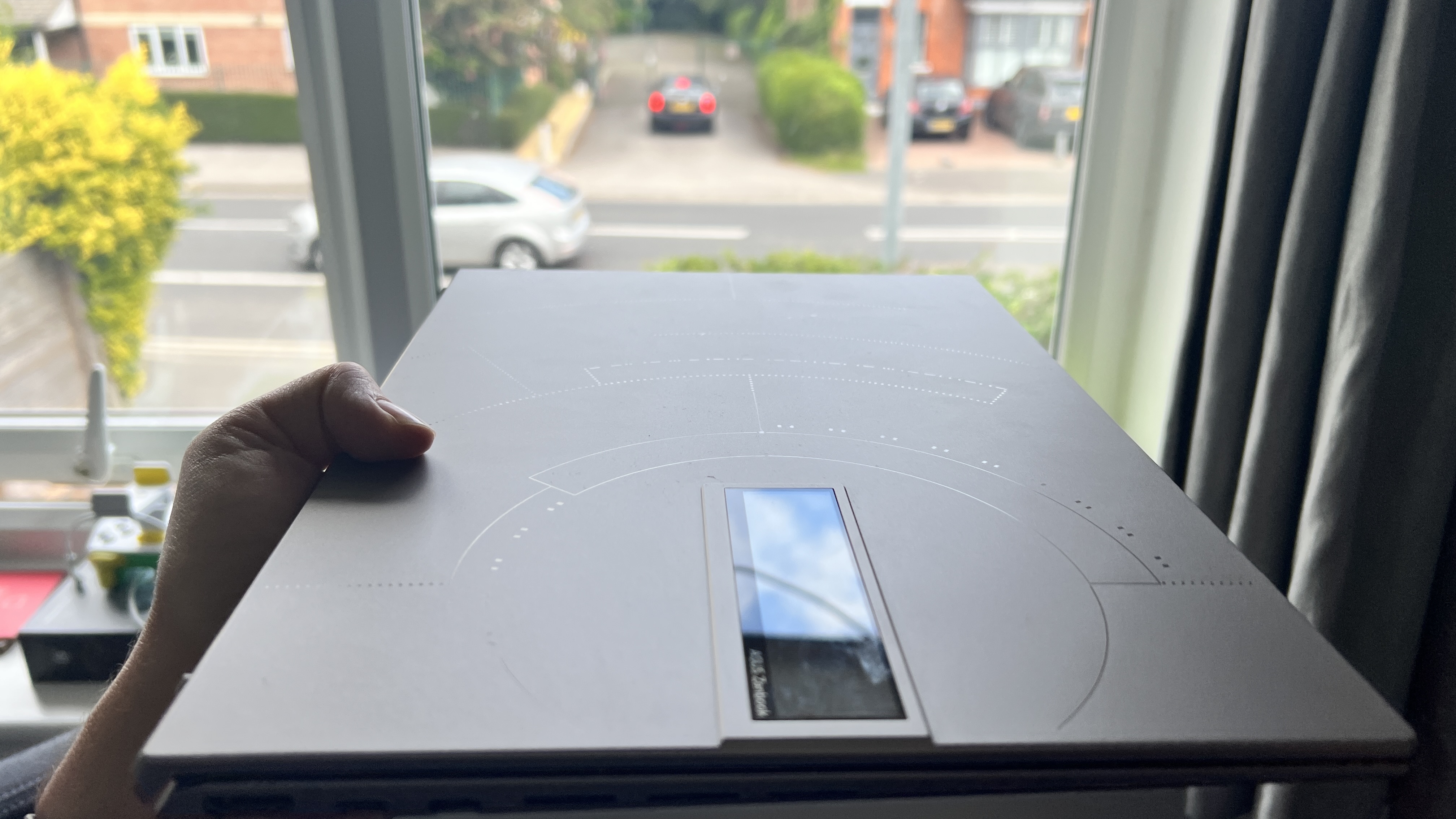
Let’s cut to the chase: this is one of the best-looking laptops this year.
A stunning aluminum finish with brushed edges feels impressively premium and sturdy, and the laser etchings on the lid welcome you to this one-of-a-kind style amongst a sea of metallic slabs. You’ll also notice the 3.5-inch ZenVision display, which I admit is a gimmick, but it is so cool when it springs to life with galactic animations.
This motif continues when you open the laptop. The laser etchings continue from the shell and you can also see Asus at its space-saving best in this moment too, with a full size keyboard reaching the edges of the bottom deck, a huge trackpad and a stunning 14-inch display with 92% screen-to-body ratio (more on these later).
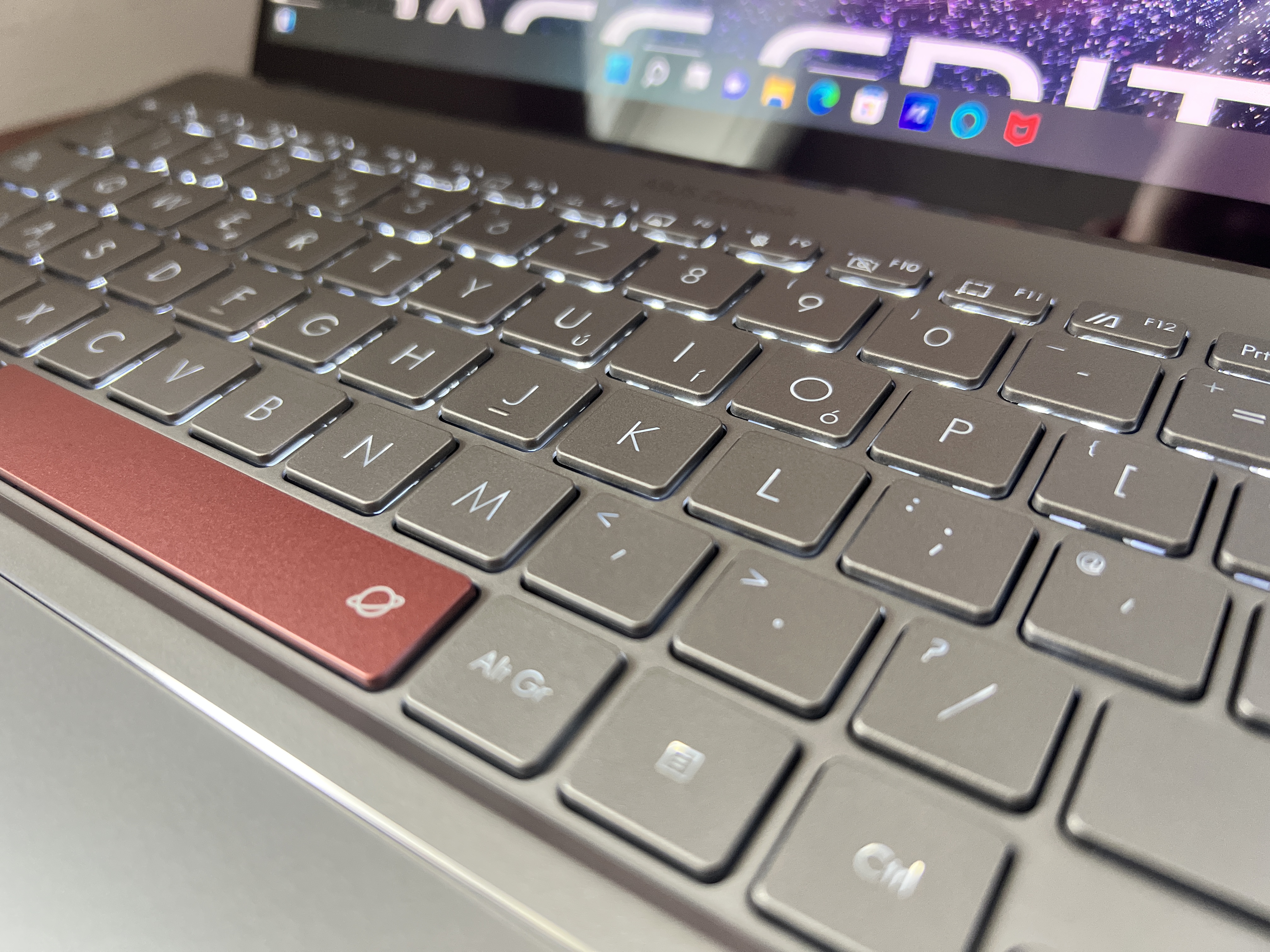
Even down to the small details, such as the small planet on the space bar and the latin proverb ad astra per aspera on the back (“through hardships to the stars”), each part of it feels uniquely full of personality.
The 14X OLED measures in at a svelte 12.3 x 8.7 x 0.6 inches with a weight of 3.09 pounds. Dimensions like these beat out the 15.6-inch Galaxy Book 2 Pro 360 (14 x 9 x 0.46 inches, 3.1 pounds), but the Acer Swift 5 does pip it to the portability post (12.2 x 8.4 x 0.59 inches, 2.6 pounds).
But looking past numbers, you’re getting a seriously sleek, durable system that is a cinch to carry around and a real eye-catcher to bring out during a meeting.
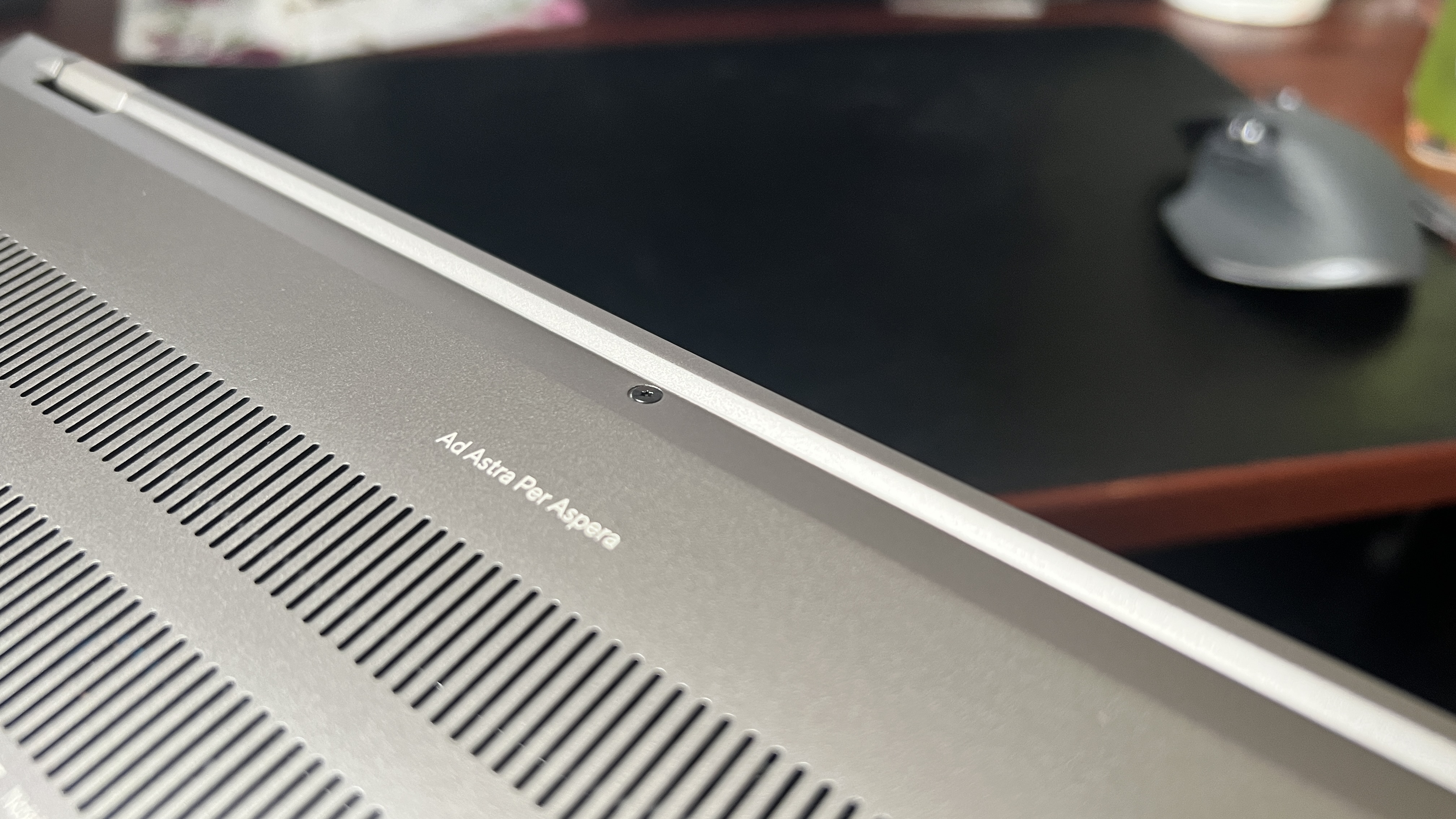
Asus ZenBook 14X OLED Space Edition ports
The 14X OLED Space Edition packs a decent array of ports. On the right side, you’ll find a microSD card slot, a 3.5mm headphone/mic jack, and a USB 3.2 Type-A port.
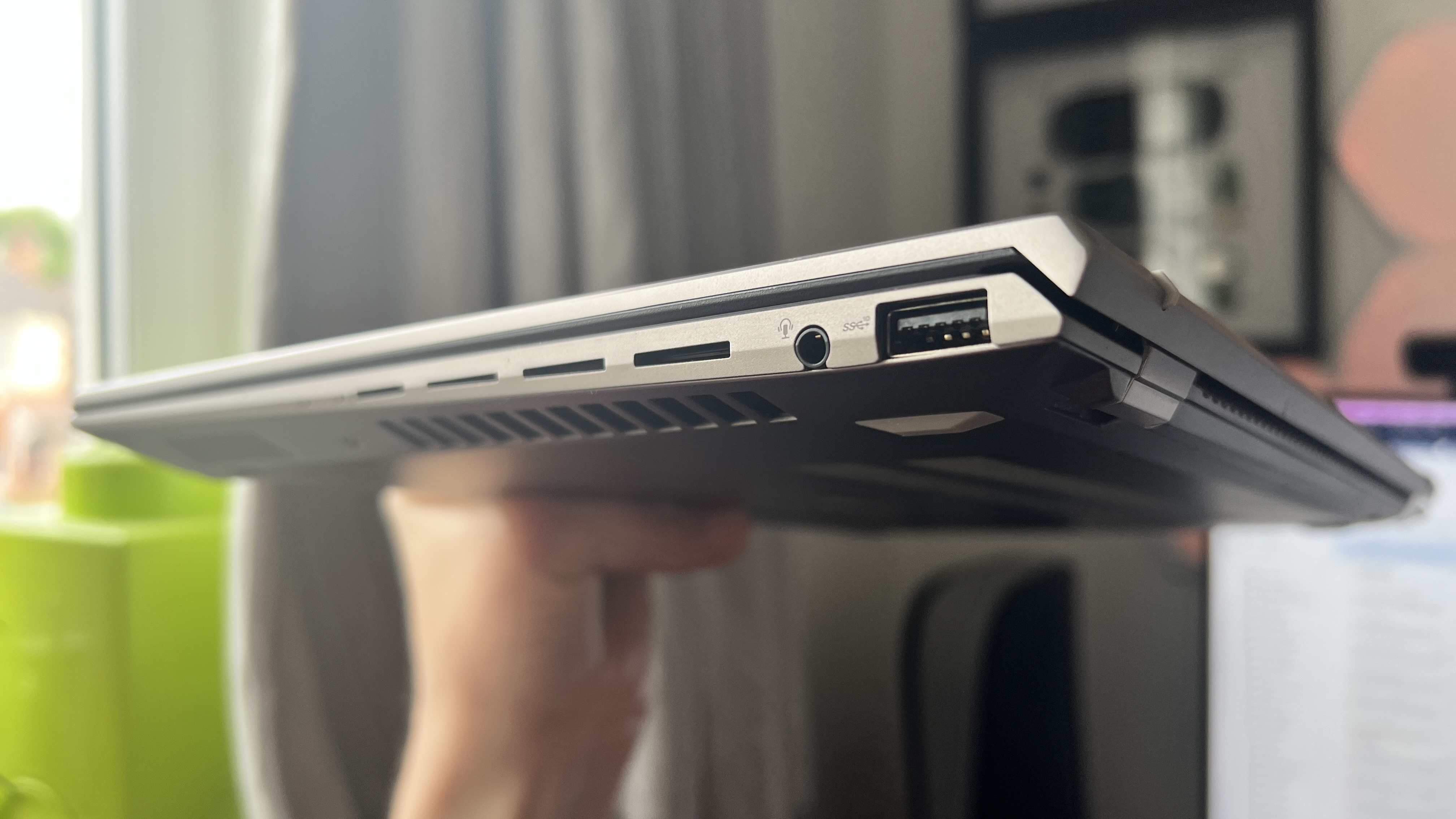
On the left, you’ll find an HDMI port and two Thunderbolt 4 ports to allow for fast transfer speeds and connecting to multiple 4K monitors.
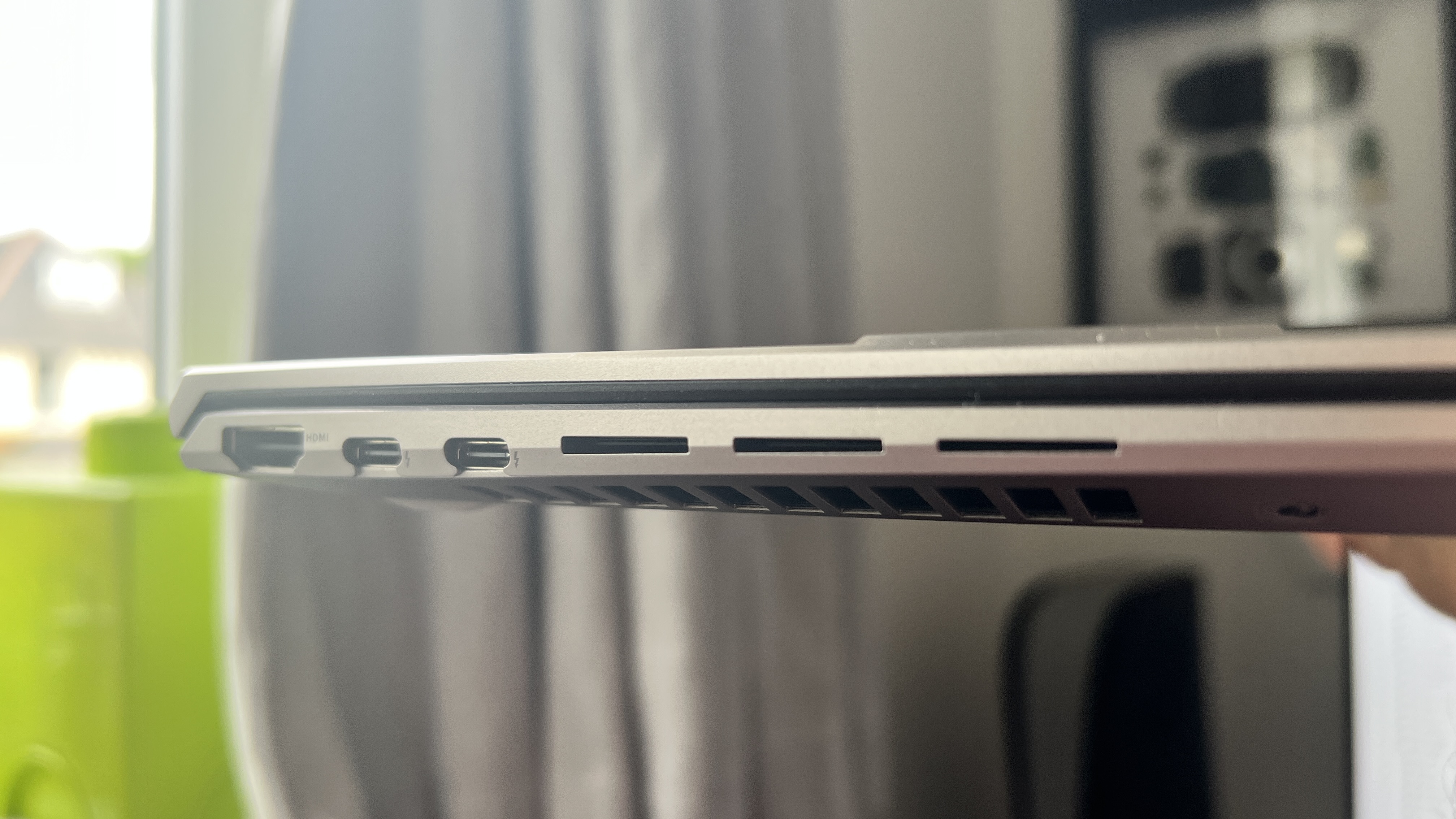
Would I have preferred a full-size SD card slot? Of course. But as far as expandable storage compatibility goes, I’ll take what I can get.
Asus ZenBook 14X OLED Space Edition: Display
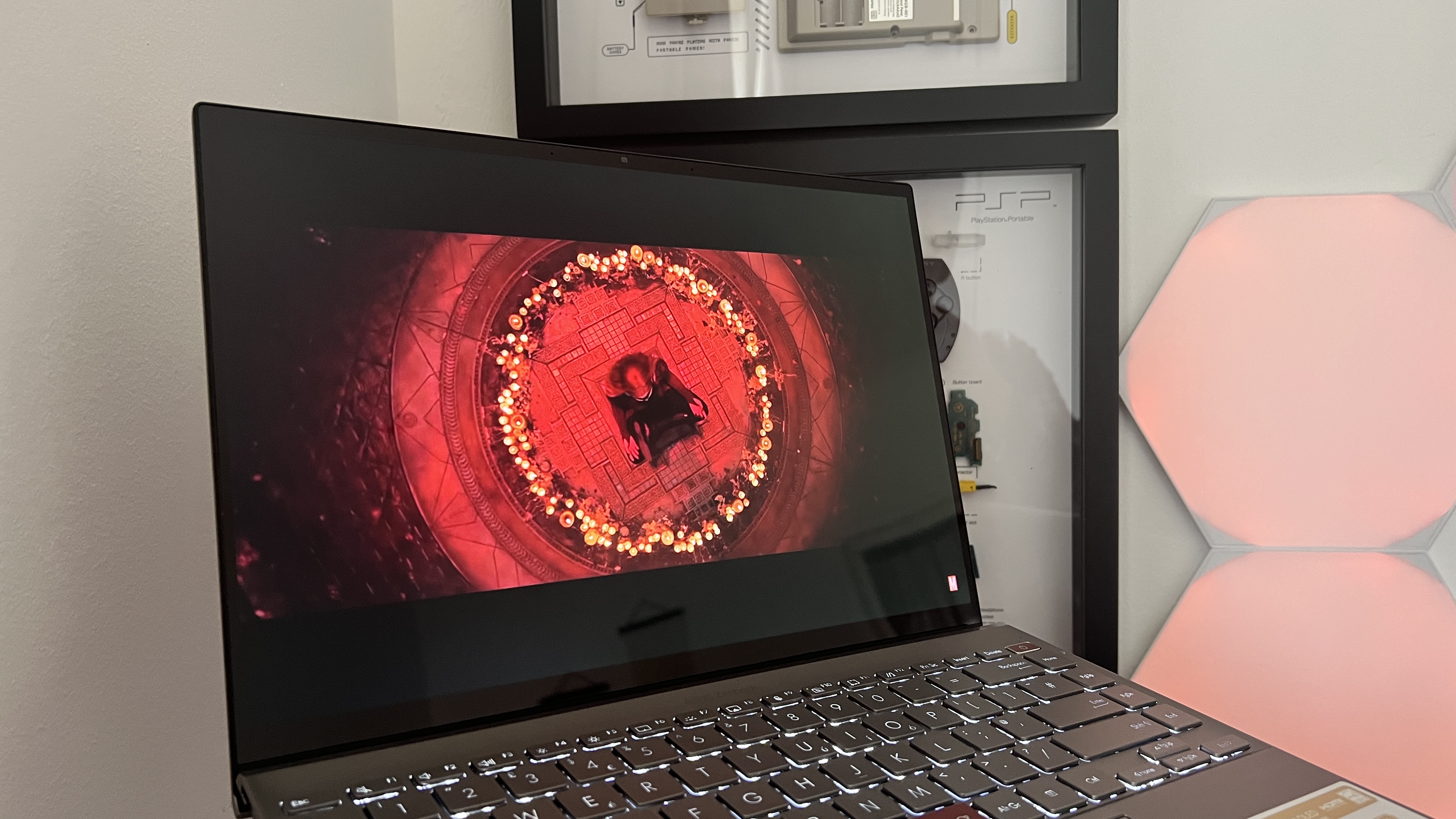
Details are crisp and colors are bright on this 14-inch, 2800 x 1800-pixel, touchscreen OLED display, which has been Pantone-validated for color accuracy. Even better, TÜV Rheinland certified the panel for its low blue light and flicker-free technology.
What does this all mean? In short, this is a great display to work on for long periods of time, with minimal eye strain and a vividness for creative work too, such as using Photoshop to tweak any photos you capture (as I did for this review).
After measuring the color coverage using a colorimeter, we saw some nice upgrades to the sRGB color gamut coverage which hit 136.1%, which blasts past the 123% premium laptop average. As for the 96.4% DCI-P3 color gamut, this outperforms the Acer Swift 5 (93.3%) and Samsung Galaxy Book 2 Pro (87.5%). But this doesn’t come as a surprise, given how fantastic the panels have been in Asus systems as of late in terms of color accuracy.
But I do have two gripes with the display. First, the brightness peaked at 354.8 nits in our testing, which falls behind the Swift 5 (457 nits) and the Galaxy Book 2 Pro (373 nits). That brightness level is strong enough for most use cases, but in direct light, it can get hard to see what’s happening on-screen.
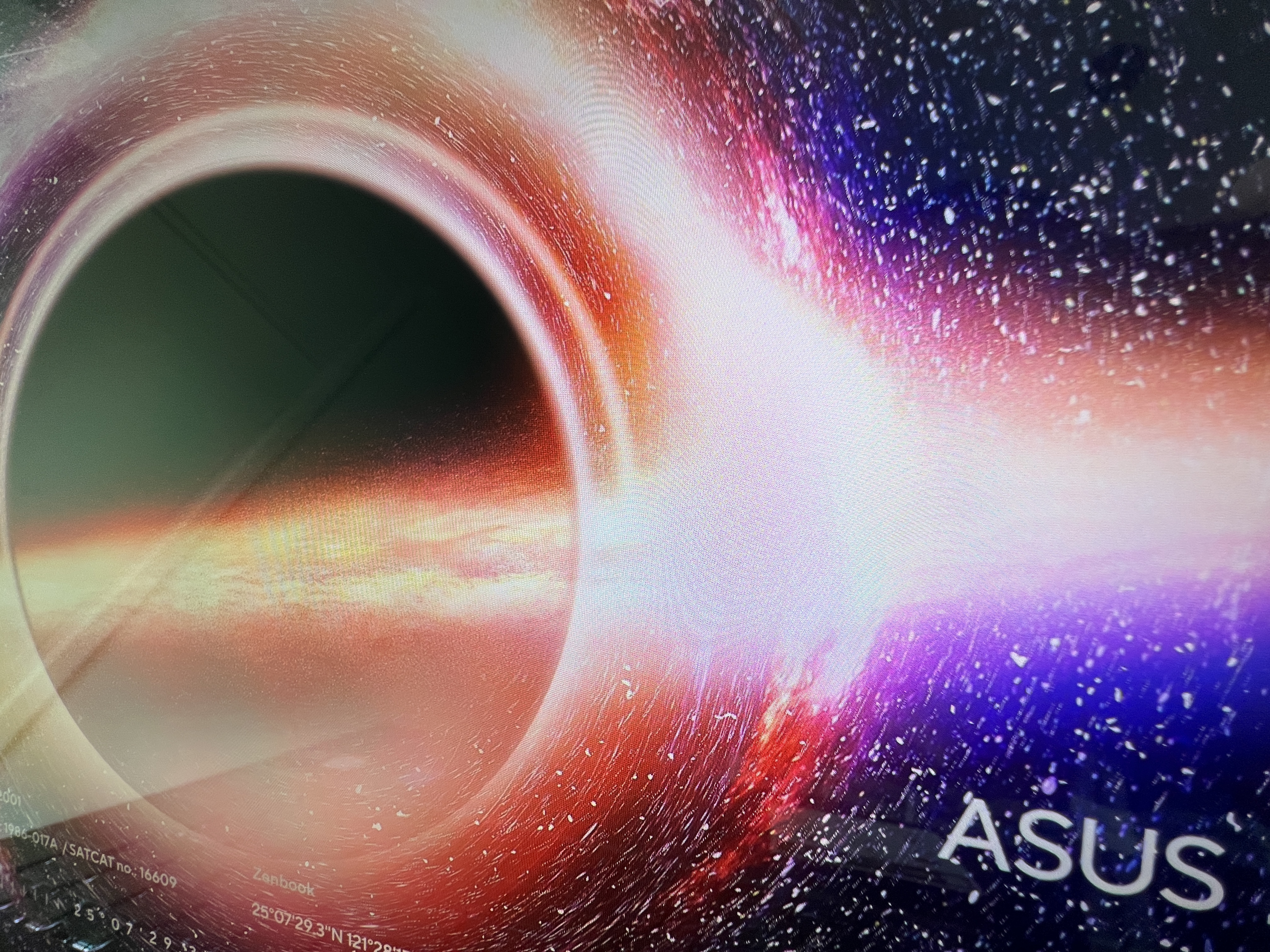
And second, the touchscreen. No, not the capability, as the touch sensitivity is impressive and the response time of your finger or stylus to the screen is immediate enough that I didn’t notice any visible lag. The problem seems to be the surface of the display. It’s smooth, but there’s a somewhat distracting visible grain-like texture that is exacerbated when viewing brighter content. This may be a coating that protects the screen from scratches, but other companies have done this without getting in the way of content.
It means that shows like the impressive Obi-Wan Kenobi sport fantastic color and really show off the contrast ratio in its darkest moments, but when the brightness is maxed out in daytime scenes, the display surface can detract from the show.
Plus, this isn’t the only display on the Space Edition. I’m of course talking about that 3.5-inch ZenVision display, which is customizable within the MyAsus app. Is there much point to it? Not really, beyond showing you the time and battery life when you close the lid. But does it look cool when the astronaut flies through the star system on its tiny screen? You bet it does.
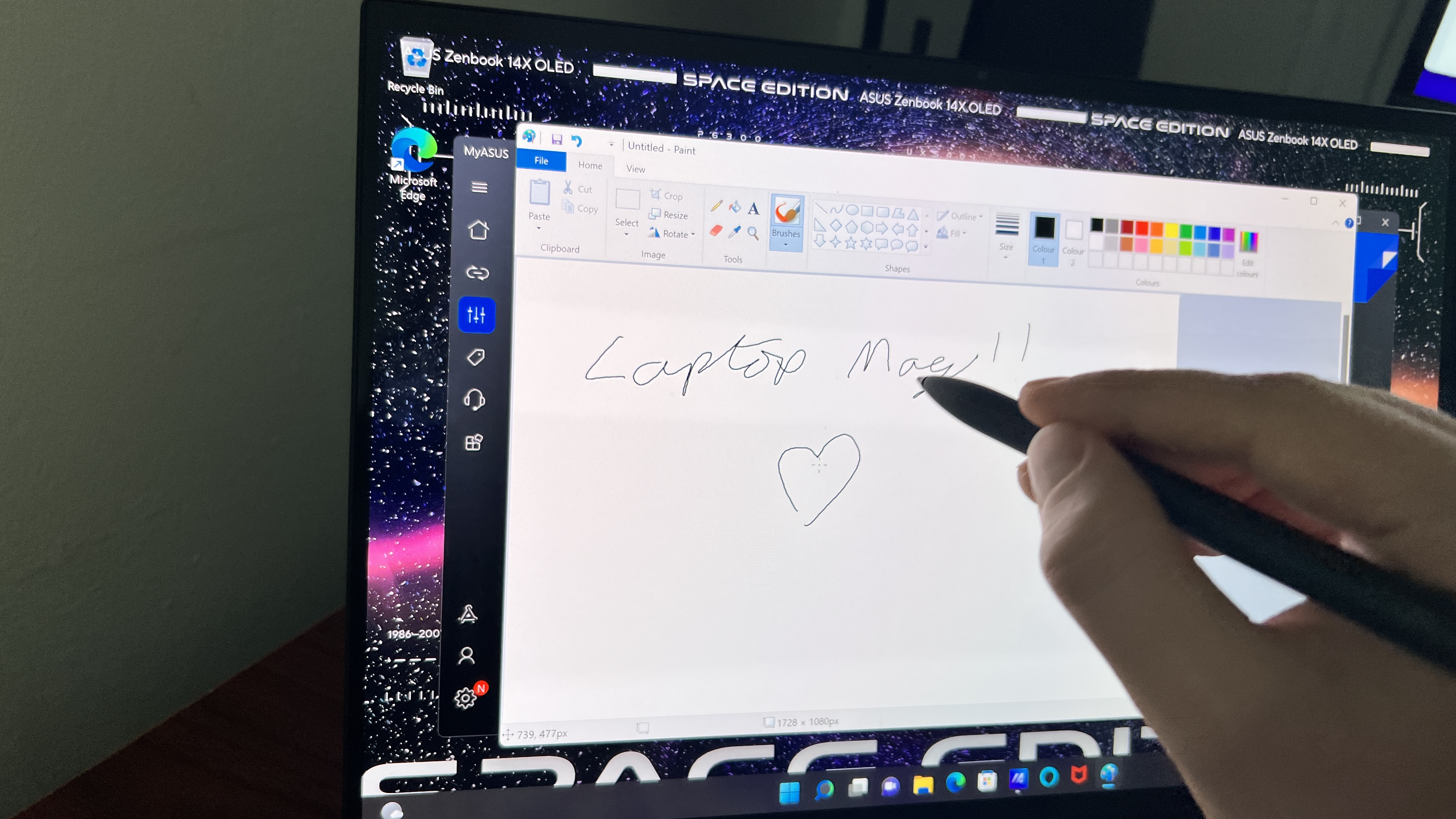
Asus ZenBook 14X OLED Space Edition keyboard and touchpad
The keyboard stretches out close to the edges of the deck to provide a nicely-sized set of keys with a subtle scoop that your fingers fall into gracefully. Touch typing is a cinch on the 14X OLED Space Edition and each switch has an impressive amount of depth to provide a nice tactile response.
I tested this using the 10FastFingers.com typing assessment and I hit my fastest score of 87 wpm. For context, I normally hit 83-85 wpm on a laptop keyboard, which emphasizes how ergonomically sound this board is.
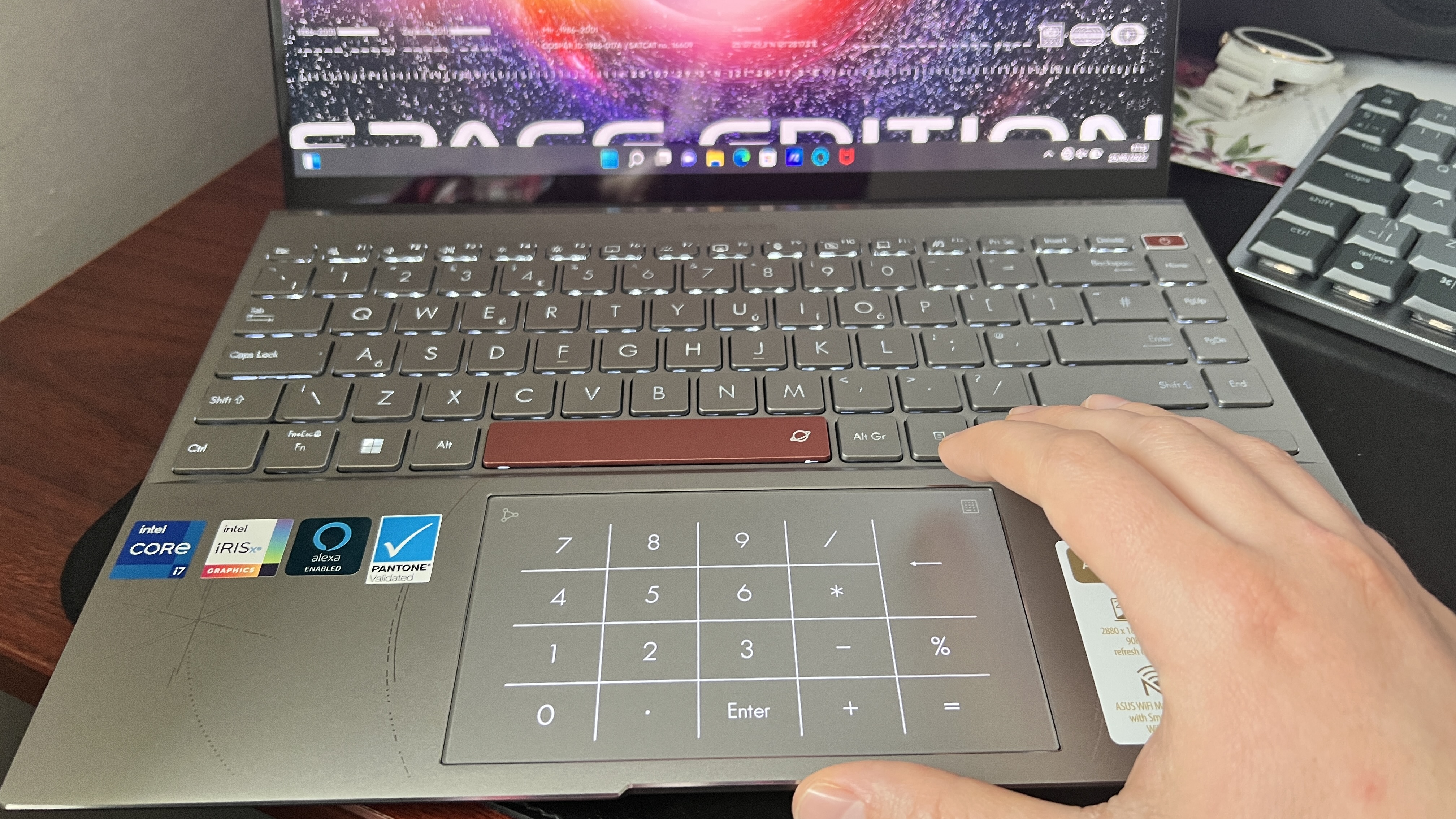
This comes paired with a generously large touchpad.At 5.1 x 2.9 inches, you get more surface area than the Acer Swift 5 (4.1 x 2.6 inches) and slightly less than the far larger Samsung Galaxy Book 2 Pro 360 (5.2 x 3.5 inches). Given how close the smaller screen and frame of the 14X gets to this, it feels gargantuan.
For those who spend their time programming or using spreadsheets, the option to activate a number pad on the touchpad is a great addition for productivity.
Asus ZenBook 14X OLED Space Edition audio

As has become customary for most premium Asus laptops, you’ll find Harmon Kardon speakers in here, which provide impressive clarity and a decent bit of bass for video calls and entertainment.
They even handled the intensity of The Ghost Inside’s album “Returners,” which is an all-out assault of furious vocals, thunderous percussion and chugging guitars with no distortion.
With popular laptops like the Dell XPS 13 starting to ditch the audio jack, it’s worth noting that the 14X still has the 3.5mm jack and audio production of the codec provides plenty of detail.
Asus ZenBook 14X OLED Space Edition performance
Under the hood, Asus has cranked up the performance of the 14X OLED with a 12th Gen Intel Core i9-12900H CPU, 32GB of LPDDR5 RAM and a 1TB M.2 NVMe PCIe SSD.
I threw so much stuff at this machine, including Two Point Hospital running in the background as I edited a massive picture on Photoshop, played multiple 1080p YouTube videos, streamed on Twitch with OBS and ran a benchmark. Even under such pressure, touch responsiveness didn’t lag and the system kept running smoothly.
This is all thanks to that CPU, which hit a bonkers Geekbench 5.4 multi-core score of 11,142. Unsurprisingly, this demolishes the Acer Swift 5 (9,859) and the Samsung Galaxy Book 2 Pro 360 (9,043) and zooms by the premium laptop average (5,956).

In standard multitasking, chances are you will not really notice the speed difference between a Core i7 and i9, which makes this extra performance headroom ideal for a prosumer workload.
That’s further emphasized by our Handbrake app benchmark result, which saw the 14X OLED Space Edition convert a 4K video to 1080p in 7 minutes and 39 seconds — 2 minutes faster than the competition and well ahead of the category average (13:27).
Not only that, but high-capacity files are saved and loaded with a respectable speed on the M.2 SSD. Rest assured, this beast will keep up with your intense workload. When transferring a 25GB file, we saw speeds up to 1,747 MBps, which absolutely anihilates the industry average (825 MBps).
Asus ZenBook 14X OLED Space Edition graphics
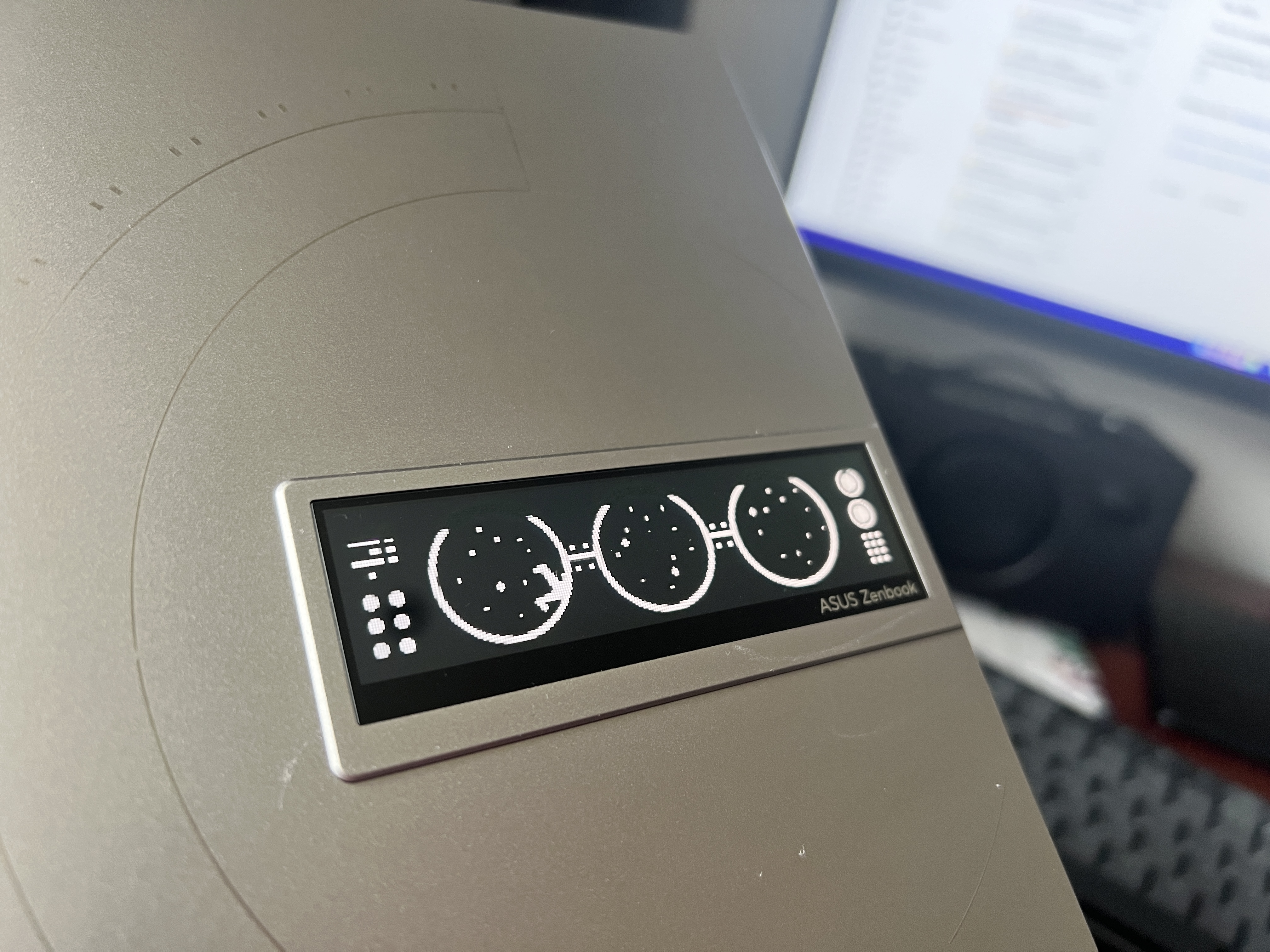
The configuration I reviewed offers integrated Iris Xe graphics, which can keep up with even the most visually intensive parts of my workload like photo and video editing. You’re not going to play any serious games here, but the graphics chip can more than hold its own for plenty of casual play.
The ZenBook 14X OLED Space Edition hit a stable 36 frames per second in Sid Meier's Civilization VI: Gathering Storm at 1080p. On the 3DMark Fire Strike test, the ZenBook proved its graphics power with a seriously impressive 5,336 — exceeding my expectations for integrated graphics on this beast. In practice, this translated to me being able to play plenty of Two Point Hospital and some Forza Horizon 5 on lower settings with ease.
I’d be curious to see how the Iris Xe graphics compare to the dedicated Nvidia GeForce MX550 GPU in the standard 14X OLED.
Asus ZenBook 14X OLED Space Edition battery life
Given that Core i9 that’s crammed into this small system, I came into this slightly nervous about the battery life. The reality is that while the 63WHr battery does hold its own a little better than I expected, it’s not great.
In our Battery Informant testing, we hit a total time of 6 hours and 2 minutes. That’s miles behind the Galaxy Book 2 Pro 360 (11:59) and Acer Swift 5 (11:24) and falls well below the premium laptop average (10:29).
My day involves multiple Chrome tabs, Spotify and Slack running constantly, and the occasional use of Photoshop. Starting at 9am, I reached 1pm before needing to charge. If you’re economical with power over those long periods away from plug sockets, I’m sure you could go longer, but this isn’t going to last for your whole working day.
Asus ZenBook 14X OLED Space Edition webcam

In space, no one can hear you complain about the webcam — at least that’s what Asus is counting on with this 720p shooter that leaves a lot to be desired.
Even in a well-lit space such as my spare room, the pictures look as if they’ve been shot on the likes of that camera you clipped onto the bottom of your Sony Ericsson T310 (shout-out to anyone who got that reference). Photos are fuzzy and lacking enough detail to be good for anything other than the occasional Zoom call.
At least it’s nice to have Windows Hello support thanks to the IR camera which uses facial recognition to rapidly log you into the system and if you need greater video fidelity you can pick up one of the best external webcams.
Asus ZenBook 14X OLED Space Edition heat
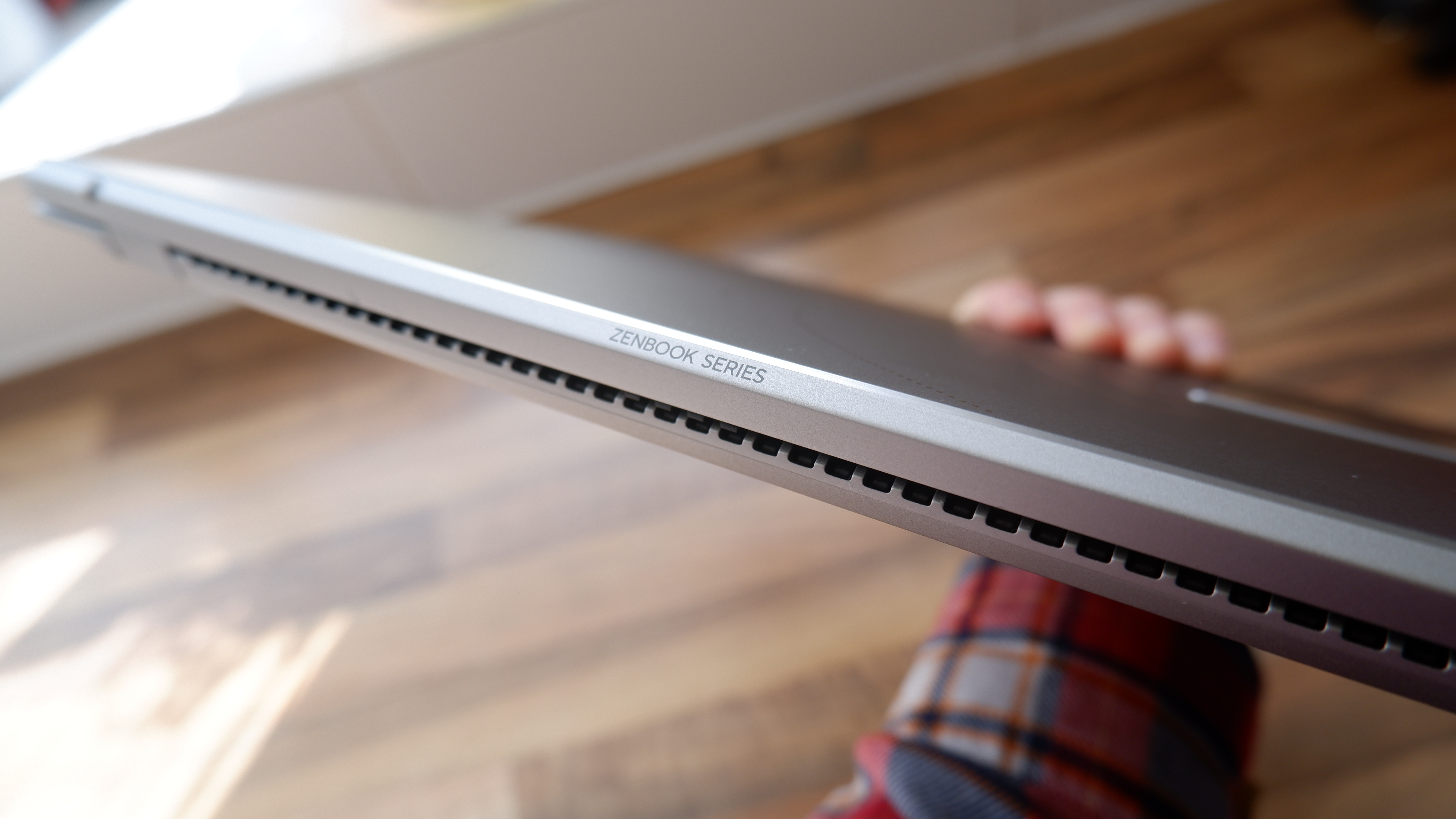
The story of top temperatures of the 14X OLED Space Edition is both a spicy one and an example of how Asus is getting better at heat dissipation.
This reached a max temperature of 102.9 degrees on the underside, which is a fair bit above our 95-degree comfort threshold, but the trackpad stayed at a far cooler 79.9 degrees — all after streaming a 15-minute video.
Just make sure you give the fans positioned on the underside enough room to breathe and the 14X should stay relatively cool
Asus ZenBook 14X OLED Space Edition software and warranty
Asus is getting better at supressing its bloatware urges, which means you’re left with the MyAsus app and a rather insistent McAfee security package.
The latter starts to feel rather annoying after a few prompts, but a simple uninstall removes it. There is a lot of useful stuff here too, such as the EQ controls, fan control options, ZenVision display customization, and the ability to adjust the white balance of the screen.
As far as after-purchase support goes, the ZenBook 14X OLED comes with a one-year limited warranty. See how Asus fared during Tech Support Showdown and Best and Worst Brands, our annual special reports.
Bottom line
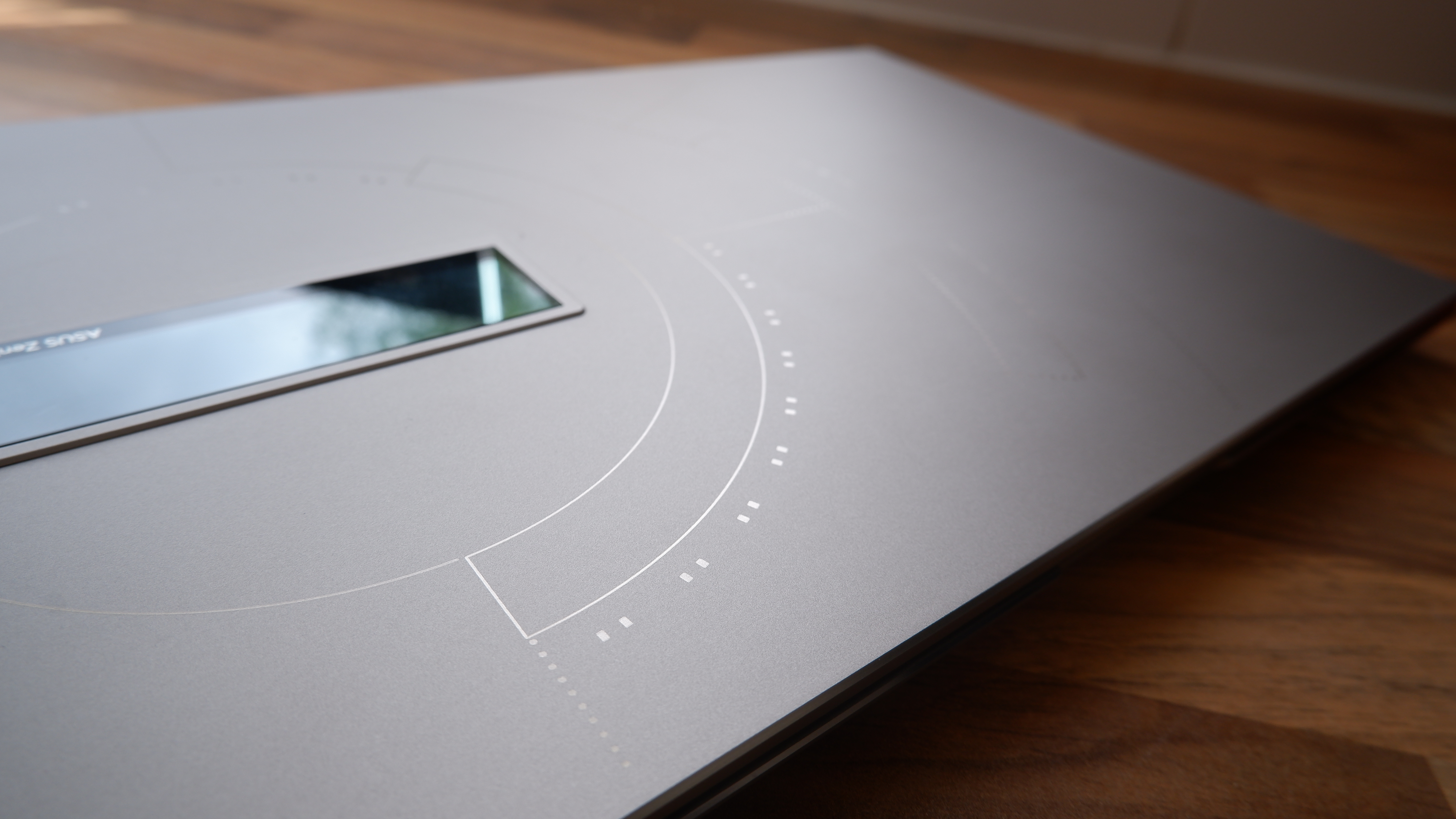
There’s no two ways around it: the Asus ZenBook 14X OLED Space Edition is a cool laptop. The visual language is unlike anything else you’ll see in 2022, the ergonomic usability is fantastic and the power under the hood is enough to tackle even more intensive workloads.
But there are some flaws that prove problematic, be it the occasionally distracting display coating, the lacking battery life or the higher temperatures of its underside.
Overall, it’s a great system and if you like the space aesthetic, it’s worth the money. But don’t forget that you can get (most of) the same package for a cheaper price in the standard ZenBook 14X OLED.

Jason brought a decade of tech and gaming journalism experience to his role as a writer at Laptop Mag, and he is now the Managing Editor of Computing at Tom's Guide. He takes a particular interest in writing articles and creating videos about laptops, headphones and games. He has previously written for Kotaku, Stuff and BBC Science Focus. In his spare time, you'll find Jason looking for good dogs to pet or thinking about eating pizza if he isn't already.

